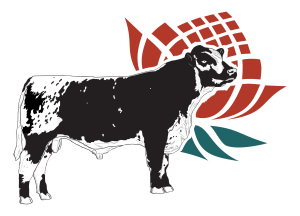FREQUENTLY ASKED QUESTIONS
What Country did Speckle Park originate?
Speckle Park originated in Saskatchewan, Canada. They were first imported into Australia in 2007.
When did Speckle Park come into existence?
In 1959, Bill & Eileen Lamont of Maidstone, Saskatchewan, bought a speckled animal from Mary Lindsay of Greenstreet, Saskatchewan. They crossed it with an Angus bull and the result was what we now call ‘Speckle Park’. It was in the early 1960’s that the speckled cattle got the name ‘Speckle Park’.
What breeds make up Speckle Park?
Shorthorns and other White Park colour pattern cattle. These animals gave Speckle Park their distinctive colour patterns. They were then bred to Angus to create what is now known as the ‘Speckle Park’.
Why breed Speckle Park?
Speckle Park has a high quality carcass. They also have many desirable traits including calving ease, are feed efficient and easy to handle. The beef industry currently desires 300 and 340 kilogram carcass of well-marbled beef. Speckle Park cattle offer this; the meat is lean, and well-marbled. When you cross Speckle Park with other breeds the calves at weaning time are heavier than their purebred counterpart.
Are Speckle Parks a registered purebred breed?
Yes. Speckle Park has been a registered breed since 6 July 2006 when the Canadian Minster of Agriculture approved it as a breed according to the terms of Canada’s Animal Pedigree Act 1988.
Is the speckled pattern a dominate trait & what colours are speckle park?
Yes, if you cross your cattle with Speckle Park bulls a large percentage will be speckled as it is the dominate gene. Speckle parks come in a variety of colours including; speckled, leopard and white pointed (white with black nose, ears & feet). A small percentage are black.
Are speckle Parks Feed Efficient?
Cattlemen feeding Speckle Parks for the first time are very impressed with the feed efficiency of the breed. In the first three years that Speckle Park have been participating in the Steer-A -Year project in Olds College, Olds, Alberta Canada, the Speckle Park steers consumed 5.5 lbs of feed per lb. of gain compared to 5.8 lbs for the other participating breeds. During the first seven years on test at the Lakeland College Bull Test Station at Vermilion, Alberta the bulls showed an average of 7.1 lbs. of feed per lb. of gain compared to 7.3 lbs for the other breeds. It would be fair to say that the tests indicate Speckle Park to be the middle of the range when it comes to feed conversion.
